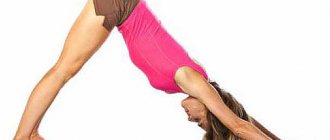No. 7. Working on the block
This type of training helps develop the correct choice of block placement. This exercise is performed with a helmet and an experienced partner. As a rule, such training takes place in the training ring, or en masse in the empty space of the boxing gym.
When performing an exercise, 2 fighters stand opposite each other and perform the exercises in shifts. One plays as an attacker, and attacks in every possible way, and the other plays as a blocker, and fights off everything he can.
Picture 1. Block training in boxing
Exercises for hitting
Let's look at how to prepare yourself for going to the gym and how to supplement your training there.
What can you do at home?
At home, you can use the following developments to hone your striking technique and general physical training:
- Work on a heavy, medium bag, tension and pneumatic bag (if any);
- Shadowboxing and practicing movements in front of a mirror;
- Working with the Fight Ball simulator;
- Impacts with weights;
- Explosive push-ups (also on fists);
- Jumping rope and running, as well as shuttle movements and pendulum work;
- Planking and pumping the press to strengthen the muscle frame;
- CrossFit programs that improve the athlete’s conditioning will be very useful.
Workouts in the gym
For beginner fighters there is a good basic training, which is divided into cycles:
- Jumping rope or running for 2-3 rounds (without resting for a break);
- Stretching (5-6 minutes);
- Paw work – 3 rounds;
- Beginners work on the bag for 3 rounds, more experienced ones spar;
- Next comes speed work on the pneumatic bag - 2 rounds;
- 2 rounds of punching bags with elastic bands;
- Final stretch.
All this is done one after another without a long rest. Supplements include rope climbs, stair running, water kicks, and weighted kicks.
Additional work with hardware
It's no secret that fighters also spend a lot of time in a regular gym. This is where you can improve your explosive strength, which is why heavy weights are used. An average workout will look like this (the number of repetitions implies using a weight that can be pressed exactly that number of times without reserve):
- Barbell press: 1st set – 12 reps, 2nd – 6, 3rd – 4, 4th and 5th set of 2 reps and 6-7 sets of 1 rep with maximum weight;
- 3 sets of uneven bars, 15 reps each;
- Seated block rows – 3 sets of 10 times;
- Leg lifts (abs pumping).
Next training day:
- Pull-ups – 3 sets of 12 reps;
- Deadlift – 3 x 6 times;
- Standing barbell press – 3 sets of 10 times;
- Hyperextension and abdominal exercises.
Exercises are performed in an explosive manner.
No. 6. Working with the ball
For those who love active defense and don’t like to miss at all, exercises with the ball, or rather with a ball, are perfect. If you look at many professionals, you can often see such a sight. The boxer stands against the wall in a standing position, and small balls are thrown at him. The whole point of the exercise is to avoid and block as effectively as possible, using only a boxing stance, and without lowering your arms.
This exercise effectively develops automaticity, as well as the feeling and accuracy of movements. Great for developing reflexive defensive skills.
Handmade: How and why to stuff your fists
Who in childhood did not punch his fists against a pear hanging forlornly in the corner of the room or a fence in the yard, and then, inspired by the example of masters of oriental martial arts, with an awkward blow try to punch through a wooden block or crumble a brick into dust?
Today, it is unlikely that anyone will have a conscious desire to repeat that youthful experience and test the strength of surrounding objects with blows, however, in any case, it will not be superfluous to have strong fists. The editors of FURFUR decided to figure out how to punch their fists and why to do it.
“IF YOU WANT TO LIVE, GET YOUR FISTS. »
S. Shnurov, “Leningrad”
No. 5. Mash
This is not exactly an exercise, but it is very effective in helping to develop defensive qualities, and in the future it helps to miss fewer goals. The essence of this lesson is that the trainee stands in a rigid block and gives the opponent the most free attack. The attacker must shower the trainee with a hail of blows, and he, in turn, must defend himself with all his might.
Picture 2. Mash
What is padding and why is it needed?
Stuffing is a relatively long process, reminiscent of a Zen Buddhist procedure in its ceremonial monotony. If we add to this the masochistic tendency towards pain of the person producing it, then we can safely distinguish it as a special, unlike anything else spiritual practice. It has, however, a completely practical goal - to get a teeth-breaking fist.
In essence, padding is a procedural hardening of the striking surface: be it a fist, shin, head or even heel, allowing you to deliver and receive blows without pain, injury and damage to the connective tissues of the body, which, when struck with an unplanned force, risk turning into minced meat. Just as a guitarist’s fingers become calloused when playing for a long time, and the nerves move further away from the surface, allowing him not to feel pain when playing on hard strings, so when playing on hard strings, the bone structures are gradually transformed, joints are strengthened and the skin is thickened, reducing pain. sensations when striking.
No. 3. Training on a small bag
Training on a small bag can be aimed not only at developing the speed and sharpness of the blow. Since the punching bag bounces back very quickly, many experienced boxers use it as a punch to their opponent, do 1-2 dodges, and then strike again. And so on in a circle. The exercise trains the boxer's deflection, as well as seeing the opponent's punches.
Picture 3. Working with a small pear
How to hit correctly?
At first glance, the simple process of impact is actually a rather complex combination of a number of interrelated factors in which almost all parts of the body are involved. Let's consider them separately.
Rack
First, it’s worth understanding what stands there are for working with your hands and feet:
- Left-handed (for right-handers);
- Right-handed (for left-handers);
- Frontal.
It should be noted that in boxing there are more than 10 types of stances, which take into account the transfer of body weight to any of the legs, the position of the arms, head and body. But first, it’s worth taking into account only three main ones. As for kicks, the emphasis here is on the correct transfer of body weight, turning the pelvis along the trajectory of the leg and preparing the kick itself.
Basics of correct left-handed stance (for right-handers):
- Feet are placed shoulder-width apart;
- The right foot is slightly on the toe (it is at the back), and the left foot should be placed on the entire surface of the foot and turned slightly inward to ensure stability (the left foot will be the “front”);
- The right hand is placed so that the elbow is at the level of the liver, and the fist is at the lower part of the jaw. The left one, in turn, is brought forward a little, the elbow is below the heart, and the hand is turned so that the palm is more turned towards the enemy;
- You should not raise your arms too high, as well as your shoulders themselves - in this case, the deltoid muscles will always be tense, which will ultimately lead to very rapid fatigue, and on top of everything else, it is extremely inconvenient to strike from such a position, because the trajectory of the natural movement of the joints is obviously disrupted ;
- The chin is lowered to such a level that you can protect yourself from a potential blow not only with the forearm, but also with the shoulder itself;
- The opponent will end up between the left and right hands (in the center), with neither hand covering him;
- The forward movement in the stance always begins with the “back” leg (right), and backwards with the left (“front”).
Accordingly, for a left-handed person everything is done exactly the same, only in mirror image. Regarding the front stance: both hands are at chin level, legs are shoulder-width apart and slightly bent at the knees (toes slightly inward), the body does not rotate.
How to make a fist?
A correctly clenched fist is the key to success when striking. In this case, everything is simple:
- First, the fingers of the hand are bent in the phalanges in the middle;
- Next, they are folded so that the tips of the fingers rest against the palm and the fist becomes one plane, which will be used to deliver the blow;
- The thumb is placed under the fingers from below (not from the side) to avoid injury.
Angle of application and general technique of impact
For a novice fighter, it is very important not to immediately rush into complex combinations and not to practice strikes that are technically difficult to perform. The jab and cross are ideal for starting. Each strike has its own angles and it is better to practice them with a coach, since from the outside you can see exactly how the movement itself occurs in a particular case.
To throw a jab, you need to be in a regular right or left stance. This blow is delivered with the “front” hand, for a right-hander it is the left, for a left-hander it is the right. Despite the apparent simplicity of the jab, it is very important to observe the angles and turns that the arm and body perform in order to avoid injury:
- Hands are at the chin. At the start, the fist of the striking hand should be in a vertical position, with the elbow looking down;
- While performing the movement, it is necessary to turn the hand so that the fist ends up in a horizontal position and the elbow points outward. This will help make the hand as rigid as possible;
- At the end of the movement, the kicker's arm will be fully extended. The fist is at the same level as the shoulder (it is not necessary to tuck the hand, making a straight “shoulder-fist” with a bend at the end, as the hand can be easily injured);
- Another very important detail. Being in such a stance, when the blow has already been struck, but the hand has not yet been returned back, the head must not be further than the line on which the front leg stands - this way you can lose balance;
- To return the hitting arm to its place, you need to lower your elbow down, but do not move your entire body back.
A blow such as a cross is delivered according to the same general principles, but here there is more emphasis on working with the body. The right hand is used to apply it. At the beginning of the movement, it is located at the chin. The first step is to turn the foot to start, then turn the pelvis and body so that eventually the whole body is in a frontal position. After this, the arm is extended from the shoulder (all the subtleties of the movement are preserved, as in the case of the jab), and by creating a straight line from the arm, the movement can be considered completed. The hand is returned to its place by turning the body and lowering the elbow into the liver area.
Kicks
For a beginner, kicking may simply be useless - this is the case when the only right decision would be to contact a trainer. However, it is worth at least understanding how to deliver such a blow. Let's take, for example, the most commonly used low kick:
- From a normal stance, the foot of the front leg turns outward slightly;
- At this time, the back leg, with the help of twisting the pelvis, is carried forward and with an amplitude, sharp movement, it is launched into the desired area for the strike;
- You need to hit exclusively with your shin (bottom, middle or top - everyone decides for themselves what is comfortable for them), and not with the instep of the foot;
- The blow is made while exhaling, after which the leg returns to its place, just as it was thrown out - it needs to be bent.
It is advisable to practice low kick on a heavy bag.
Important little things
There are some details that are not always paid attention to. But they are extremely important. Eg:
- When striking, you need to clench your fist as tightly as possible and tense your hand. While wearing boxing gloves for training, some beginners forget about this, and while working without them, they “successfully” break and dislocate their fingers;
- The fist is compressed strongly even during the strike. When clenching a fist, a lot of muscles work, and if you constantly keep it tense, even when you’re just moving, you can quickly clog the muscles and greatly lose the speed and hardness of the blow;
- All strikes start from the feet. To understand what the difference is between a blow delivered simply by hand and one performed according to technique, you can take an ordinary stone or cannonball and launch it, first from the shoulder, without turning the body or using the legs, and then according to all the canons . The distance the stone will fly will be different in these two cases.
No. 2. Individual training with a trainer.
This is a type of training where the boxer throws several punches against pads. After which the coach carries out counter attacks. The boxer himself must avoid them. This exercise perfectly helps not only to deliver a blow, but also not to forget about defense during the fight. Individual training constitutes the boxer’s base from which he will enter the ring.
Picture 4. Individual training
Boxing strikes: application technique and training
Boxing strikes and techniques, the training of which is not as simple as it might seem at first glance, are few in number. But this makes it possible to achieve high efficiency in their use in a duel. Anyone can learn to box, regardless of their level of physical fitness. However, it is absolutely not necessary to become a professional athlete to know how to hit correctly. Boxing is not only an excellent workout for all muscle groups, striking, learning defense techniques, but also creating a qualitatively new level of psychological preparedness.
Is there such a thing as “stuffing” a fist?
Fist stuffing, in fact, is something else - like pure delirium. As those who “promote” such padding like to say, “The more you break your fist, the stronger it becomes.”
Picture 1 – Growths on the knuckles are a sure sign that a fighter is doing something wrong
But it’s worth even thinking for a minute and answering the question: “How will broken fists help in battle?” No way!
In addition, boxing gloves were not invented “just like that.” They are needed precisely so that fighters do not injure their hands.
You can “fill” your fist. This is done by regular and intense blows without gloves or special protective belts. Over time, scars and blue growths appear on the knuckles. And the bones are compacted to incredible sizes. At the same time, the nerve endings become less sensitive. But in reality, all this makes no sense. For professional boxing (and even amateur) this will not bring any benefit. Because when paired with someone, the fighters box each other with gloves. And gloves protect the hand sufficiently during an impact.
Having calluses on your hands, or simply “stuffing” your fist, does not provide any advantages in street fighting. If a person is attacked by a crowd of people, then he can easily injure his hand if the trajectory of his blow and the placement of his fist are incorrect.











